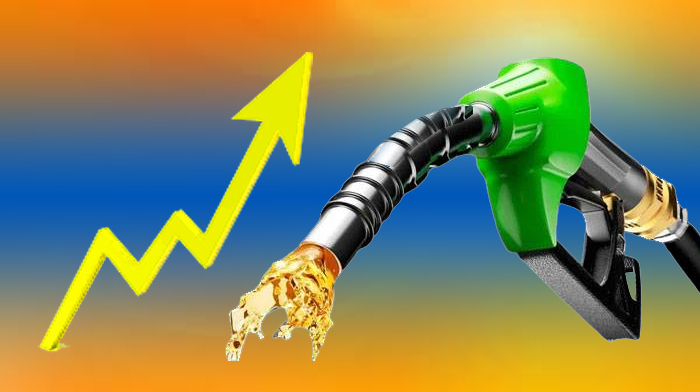Petrol Prices in Pakistan May Reach Rs. 14/L Tomorrow

Petrol Prices in Pakistan May Reach Rs. 14/L Tomorrow
In Pakistan, another hike in Petrol prices is on the horizon as the nation contends with a host of economic challenges. Notably, the government implemented a significant petrol price increase of Rs. 14.91 per liter on August 31, 2023, pushing the cost to Rs. 305.36 from Rs. 290.45. Concurrently, high-speed diesel (HSD) experienced a steep ascent, climbing by Rs. 18.44 per liter to reach Rs. 311.84 from Rs. 293.40. This change was accompanied by a Rs. 5/liter upswing in the petroleum development levy (PDL) for petrol, elevating it to Rs. 60/liter, in accordance with International Monetary Fund (IMF) requirements.
Next Price Hike Anticipated
Unfortunately, Pakistan finds itself on the cusp of yet another round of petrol price increases. Mounting energy costs, currency devaluation, and the relentless surge in global oil prices all contribute to this impending hike. According to credible sources, both primary petroleum products, petrol and HSD, are poised for another round of rate hikes.
Expected Figures
Insider reports suggest that Petrol prices in Pakistan could potentially rise by Rs. 10-14 per liter, while HSD might witness an increase of Rs. 14-15 per liter on September 15, setting the stage for the upcoming fortnight. Simultaneously, kerosene oil prices could see an uptick of up to Rs. 10 per liter, factoring in current tax rates and import parity pricing.
Currencies and Global Prices
In the initial ten days of September, the Pakistani rupee experienced depreciation against the US dollar, fluctuating from Rs. 299 to Rs. 304 before settling at Rs. 300. Meanwhile, global benchmark prices exceeded $92 per barrel last week, compared to $88 in the first week of September, effectively nullifying any advantages that exchange rate fluctuations might have offered.
Import Parity Prices
According to sources, the import parity prices of petrol, diesel, and kerosene oil have escalated by Rs. 13, Rs. 14, and Rs. 10 per liter, respectively, since September 1. However, the expected retail prices are projected to surge by Rs. 13, Rs. 16, and Rs. 10 per liter, based on product imports by Pakistan State Oil (PSO). In this scenario, petrol and diesel prices could potentially surpass the Rs. 320 and Rs. 325 per liter thresholds, respectively.
Impact on Transport and Households
HSD holds immense significance for the local transport sector, directly influencing the inflation rate. It is widely used in heavy transport vehicles, trains, buses, and agricultural machinery, including tractors, tube wells, threshers, and trucks, thus affecting the prices of essential commodities.
On the other hand, petrol powers private transport, passenger cars, rickshaws, and two-wheelers, directly impacting the monthly expenses of middle and lower-middle-class households.
Inflationary Pressure and Taxes
This surge in petrol prices in Pakistan comes amid an inflation rate exceeding 27.4% last month, which is expected to exert substantial pressure on overall prices in the nation in the coming days and weeks.
At present, these products are exempt from the General Sales Tax (GST). However, the government levies a PDL of Rs. 60 per liter on petrol and Rs. 50 per liter on HSD. Additionally, customs duties ranging from Rs. 18 to Rs. 22 per liter are imposed on both petrol and HSD. These two petroleum products represent major revenue sources for the government, with monthly sales volumes averaging between 700,000 and 800,000 tons, compared to a mere 10,000 tons of kerosene oil sold monthly.
Profit Margins for Oil Marketing Companies (OMCs) and Traders
Another pertinent aspect of the petrol price scenario in Pakistan is the increase in profit margins for fuel and diesel by Rs. 1.87 per liter for Oil Marketing Companies (OMCs). This increment will be phased in, with the first phase commencing on September 15, resulting in a Rs. 0.47 per liter increase in the sale margin for OMCs. This substantial adjustment is likely to impact the operational costs borne by OMCs, which may subsequently be passed on to consumers.
Petrol and diesel traders are also poised to experience a boost in their profit margins. A margin increase of Rs. 1.64 has been approved for these traders. Similar to OMCs, this increment will be staggered, with a Rs. 0.41 per liter hike anticipated for dealers in the first phase, effective from September 15.
As we confront the prospect of another Petrol price hike in Pakistan, the implications for both the general populace and the economic landscape remain a topic of concern. The anticipated price increases and their potential impact raise significant questions. Share your thoughts on these developments in the comments section below.
Petrol price hike
Fuel cost in Pakistan
Rising petrol prices
Petroleum rates update
Fuel price forecast
Pakistan fuel market
Oil price fluctuations
Economic impact
Consumer expenses
Fuel price trends
« PREV POST
Road Prince Unveils Its New Electric Bike E-GO
Road Prince Unveils Its New Electric Bike E-GO
Related Auto News Updates
Latest Discussions
Comments
















Add a Comment "Petrol Prices in Pakistan May Reach Rs. 14/L Tomorrow"